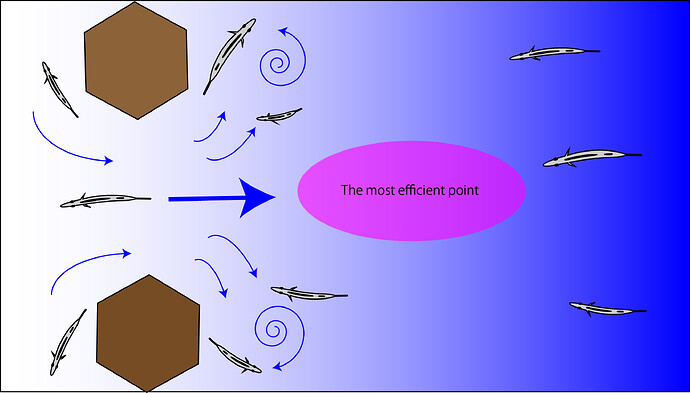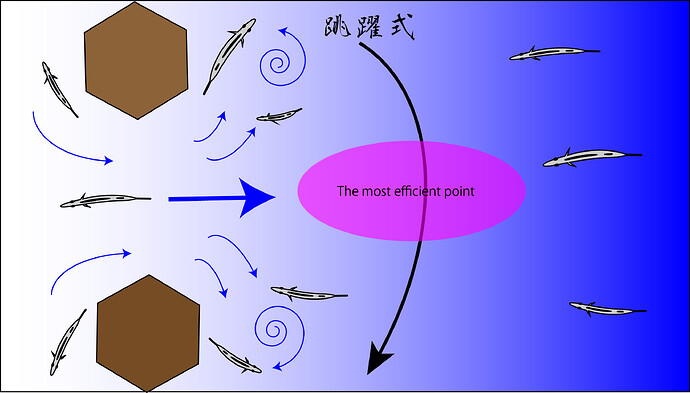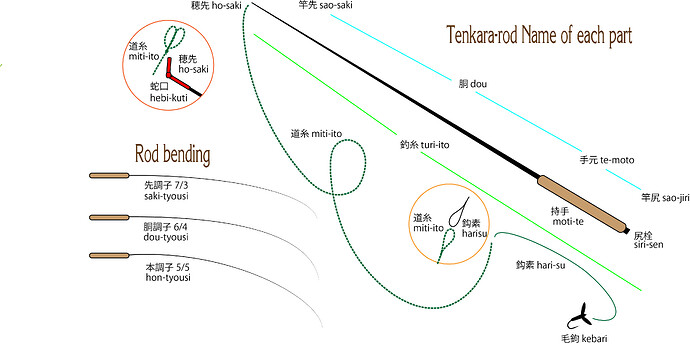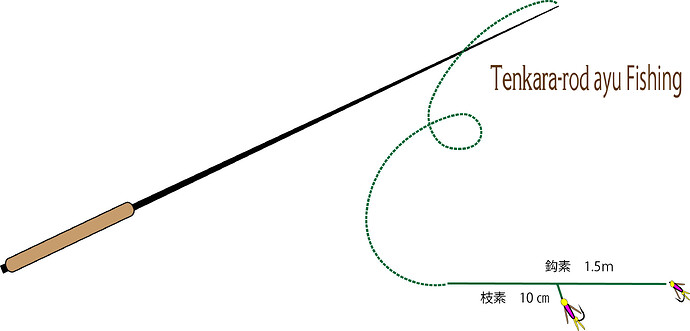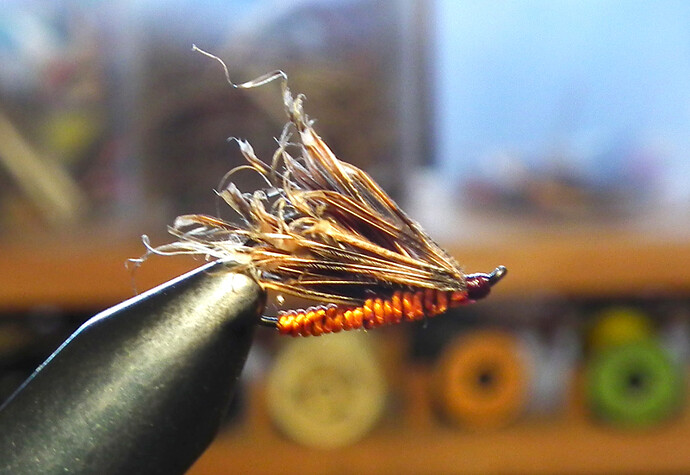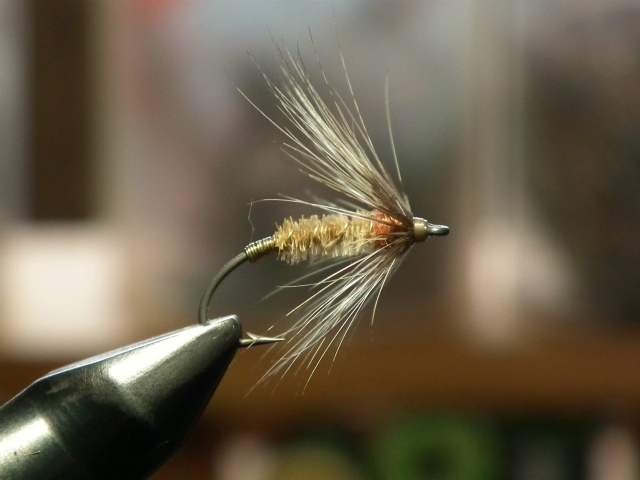I find 跳躍式釣法 [Chōyaku-shiki chōhō] an interesting name. For 2 reasons.
Google translates it as - leap or jumping fishing method.
Firstly:
In the Discover Tenkara ebook, on page 153 - they write about a fishing method called Hashi Rakashi (they did not provide the Japanese word in Kanji. And I’ve not been able to discover the correct Kanji for hashi rakashi. They wrote that it literally means - sweep quickly. But that a good translation is - run around fly.
It is done with a short stiff hackled kebari.
The idea being to sweep the rod tip so that the kebari hackle skates a sinuous path on the water surface film creating a small wake behind it. Which they say can trigger hard hits on the right day.
The description of Hashi Rakashi makes me think of the often repeated Family Circus comics in the Sunday newspaper:

Secondly
There is a pdf of a reprint of an interview done years earlier of Mr Ishimaru Shōtarō [ 石丸庄太郎さん] on the Mazegawa website.
テンカラ釣りの名人・石丸庄太郎さん
Tenkara Fishing Master - Ishimaru Shōtarō-san
http://www.mazegawa.com/produce/upload/koho0704_p6-p8.pdf
It states that his preferred fishing method was Ukase-dzuri [ 浮かせ釣り法 ] that translates as - Float Fishing.
浮 translates as Floating or Levitation. かせ can also translate as Skein - which has one definition as a flight of Geese in a V-formation. I don’t know if that term was intended to combine those two definitions. But it did make make me think of a kebari skating on the water surface creating a V-wake in the surface film.
I had a heck of a time trying to translate Mr. Ishimaru’s description of the effect of fishing with this method.
With John Sachen’s help I finally figured out it was a double negative sentence.
That probably translated like this ; The fish could not resist not coming out to take the kebari. iow the fish found it impossible to ignore the fly, and just had to have it. 
Anyway, Hashi Rakashi & 浮かせ釣り [Ukase-dzuri ] seem to be similar to 跳躍式釣法 [Chōyaku-shiki chōhō.] But maybe just a little different or maybe the same, just with a different descriptive name. 
In another section of the forum the question was asked - what is the advantage of a kebari made with kenbane hackle?
Paul G. has written that it’s advantage or main attribute is that it is a combination of stiff hackle and a soft hackle in one feather. Stiff at the root, but with soft mobile tips. The stiff hackle part would hold the kebari in a water eddy and the soft tips will provide life like motion in slower water. I don’t know if that was his own conclusion or if that was how kenbane hackle was described to him by Tenkara Angler friends in Japan.
